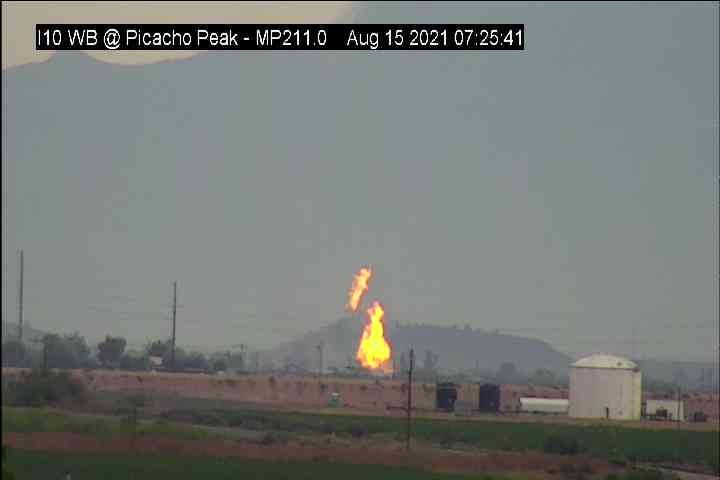An Arizona pipeline explosion caused death and destruction. Here's what sparked it

A fatal natural-gas pipeline explosion in a rural area of Coolidge two years ago resulted from gaps in protective tape wrapping that led to water leakage, corrosion and cracks along a seam weld, a federal investigation has determined.
In addition, pipeline owner Kinder Morgan likely underestimated the risks of corrosion problems because its database listed an incorrect and stronger type of protective coating around the steel pipe, the National Transportation Safety Board said in a report released April 27.
Powerful blast ignited fatal fire
The explosion in the early morning hours of Aug. 15, 2021, ignited a fire that destroyed a farm house 451 feet away, killing two occupants and injuring a third. The blast ejected a 47-foot segment of pipe 133 feet from the blast crater, partly damaged 33 acres of vegetation and burned for nearly three hours before workers could shut off the flow of gas. The blast and fire caused $5.5 million in combined property damages and emergency-response expenses, Kinder Morgan estimated.
Neither the company nor the NTSB in its report provided details about the victims, though Kinder Morgan said no litigation was pending as of its most recent annual report released Feb. 8, 2023. News reports have identified the victims as a father and daughter, Luis and Valeria Alveraz. The injured victim was the wife and mother of those killed. The company said it notified its insurers of the incident but doesn’t expect the resolution of legal claims will have a materially adverse impact on its business.
In a response sent to The Arizona Republic, Kinder Morgan said it deeply regrets the loss of life and injuries that occurred as a result of the accident.
The company also said it has replaced the ruptured pipe with new pipe, conducted multiple pipeline integrity tests, revised and enhanced its risk models for stress corrosion cracking and taken other actions.
Houston-based Kinder Morgan transports natural gas, oil, gasoline, chemicals and other materials through an 83,000-mile pipeline network.
Pipeline originally installed to transport oil
The Arizona pipeline featuring steel pipe with a 30-inch diameter was installed in 1986 by All-American Pipeline Co. to carry crude oil from west to east. It later became a part of El Paso Natural Gas and, eventually, Kinder Morgan in 2012. The 1,540-mile-long pipeline across Arizona and California was converted to natural gas transmission in 2002 and 2003. In addition, the flow was altered from east to west.
The pipeline was coated with two layers of spiral wrap tape as the main protection against corrosion, though Kinder Morgan’s records listed the coating type as “fusion-bonded epoxy,” possibly causing the company to underestimate the risks, the NTSB report said. An investigation found that cracks leading to the rupture formed and coalesced on the outside of the pipe near a seam weld. Spiral wrap tape is more vulnerable to the type of corrosion that damaged the pipe compared to fusion-bonded epoxy, a powder coating, the agency said.
Reach the writer at russ.wiles@arizonarepublic.com.
This article originally appeared on Arizona Republic: NTSB details cause of Kinder Morgan natural gas line explosion in Ariz.
